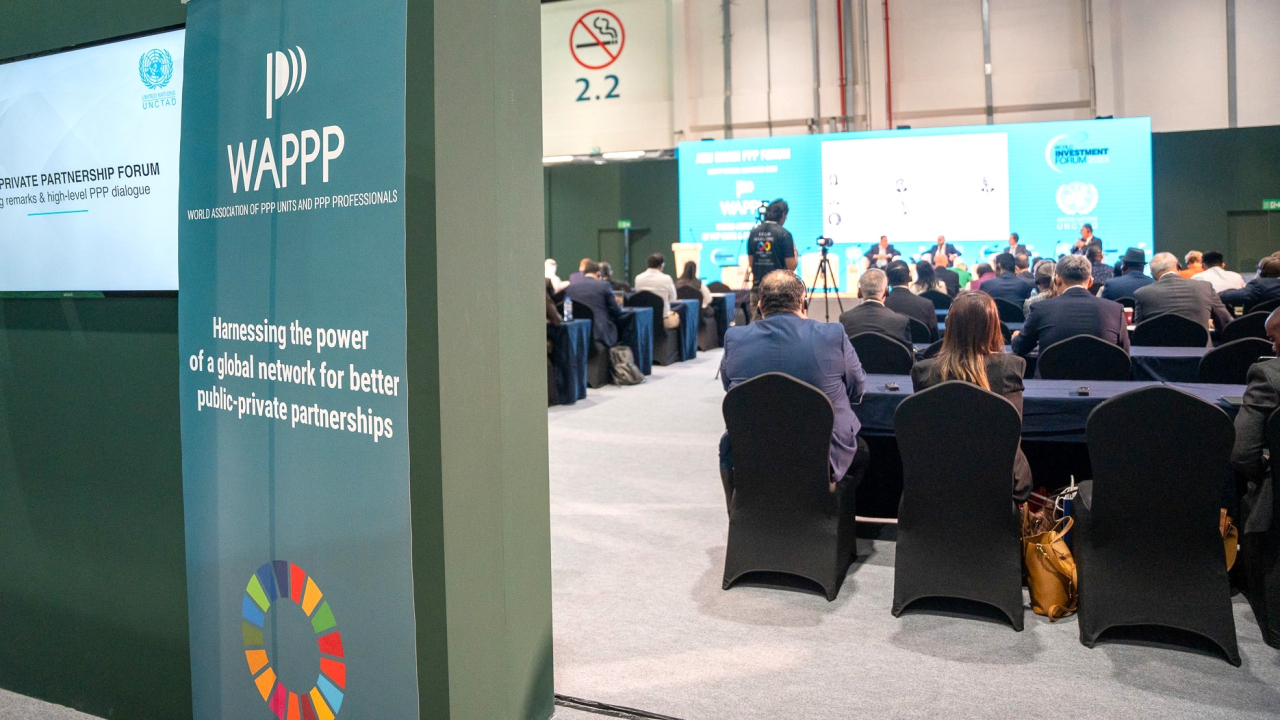PPP’s Role in the Vertiport and eVTOL Market
Kevin Rozario
October 18, 2023

The WAPPP session on the Future of Air Travel in full swing.
© WAPPP
At the World Association of PPP Units & Professionals’ Annual Forum—held this week in Abu Dhabi, to coincide with the World Investment Forum—the future of air travel came under the spotlight.
One of the sessions was all about Urban Air Mobility (UAM) a market that a 2021 report by Morgan Stanley says will grow to $1 trillion by 2040. UAM is being heavily pursued because decarbonizing transportation has become a priority in the drive for carbon neutrality. The advent of electric vertical take-off and landing (eVTOL) aircraft makes them a strong choice for quieter and less polluting journeys.
The associated infrastructure—vertiports—is being planned in many places today including Florida and the United Arab Emirates. Financing them in the future using public-private partnerships (PPPs) was at the heart of the debate in WAPPP’s UAM session.
Panelists included Curtis Grad, CEO of Modalis Airports & Vertiports; Pedro Aguas, Principal at Kearney Dubai (in charge of air advanced mobility); and Ersin Inankul, Head of Aviation Digital at Jacobs. They were moderated by Jinane Ghosh from the WAPPP Executive Committee.
The panel addressed the status of the UAM market and the technological advances in eVTOLs while also looking at the current limitations, essentially the wait for regulatory frameworks and standards.
This has not prevented investors and players like Ferrovial, Skyports, and Urban-Air Port from entering the infrastructure race to claim early positions in what is expected to be a competitive market. The technical constraints on vertiports were also examined, from their scale, how they might be networked, and the potential sizes of eVTOLs which are small right now due to limitations on battery sizes and power.
Consumer Buy-in
With so many actors, the issue of creating harmonized environments in the successful implementation of vertiports was also part of the discussion. Likely, eVTOLs will first become a reality as an urban transport alternative for relatively short-distance trips—so long as there is buy-in from the public. Moving important cargo such as urgent medical supplies is another function that could see early adoption. Beyond that, much depends on the speed of technological advances including battery performance, and a solid international regulatory system to be in place.
To date, the UAM market has been a money magnet with many investors prepared to take a punt despite knowing that profitability may be many years away.

The Abu Dhabi Forum hosted international experts on a large range of topics, not just aviation.
© WAPPP
One reason is that eVTOL players in the sector have maintained a very optimistic, even evangelical, view of the future. Just this month, at Joby Aviation in California, CEO JoeBen Bevirt told the Associated Press that he could see the company operating commercial air taxi services as early as 2025. That will be music to the ears of Toyota, the company’s largest shareholder with an 11% stake.
The Wider PPP Market
The WAPPP Abu Dhabi Forum hosted international experts on a large range of topics, not just aviation. They came from within WAPPP’s global network of PPP professionals as well as United Nations organizations, national governments, and international development financial institutions.
As the definitive platform for PPP leaders, policymakers, practitioners, and innovators, the event’s sessions and panel discussions covered other transport sectors like rail, as well as energy and water, social and healthcare, and also looked at the scope for new projects in different developing regions. They included Africa, Central Asia, Middle East and North Africa (MENA), and South Asia.
